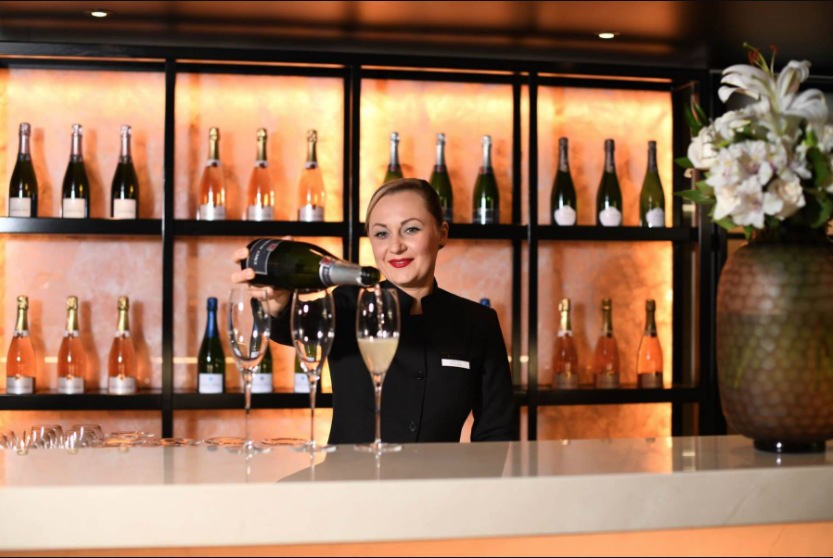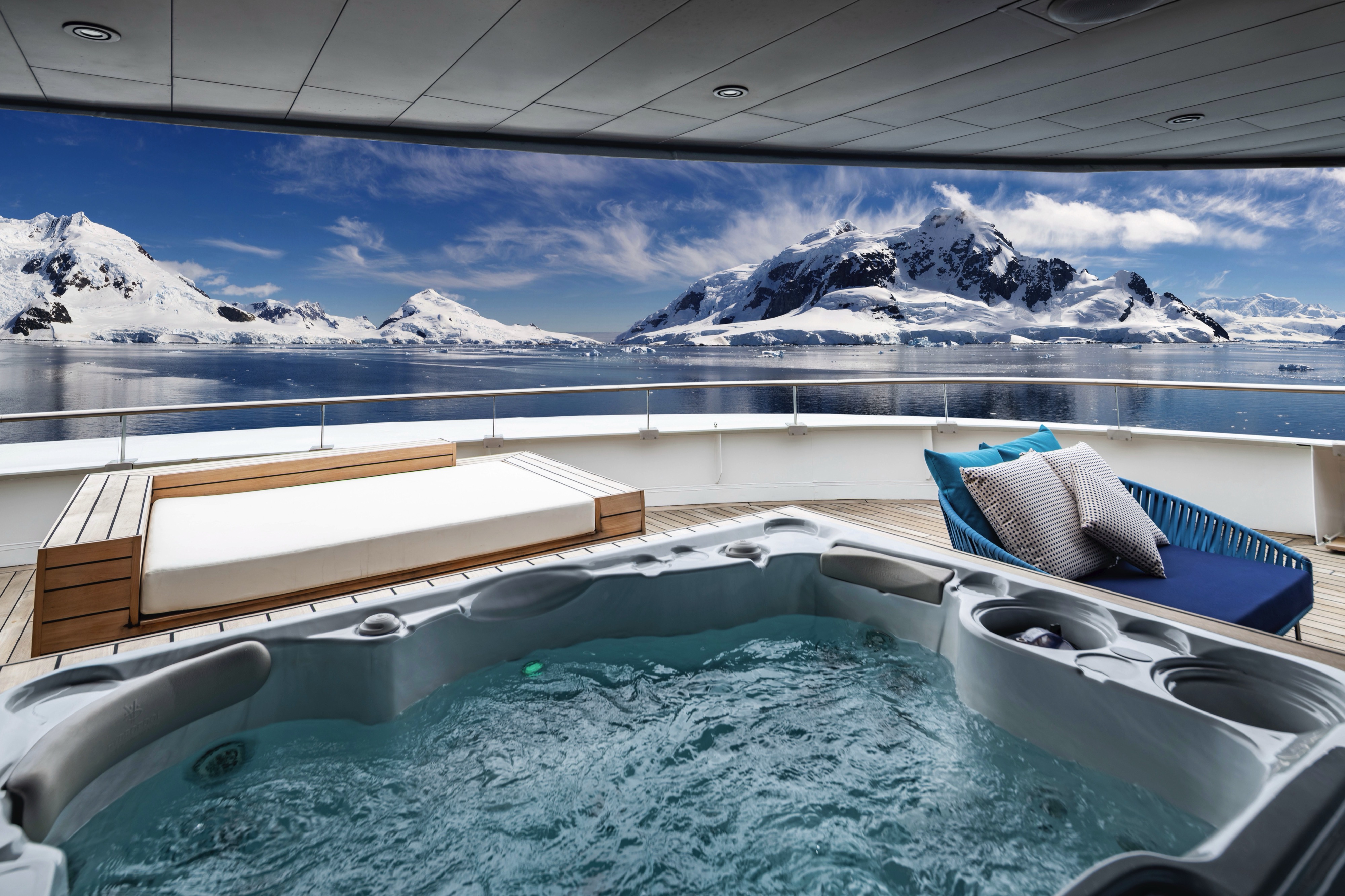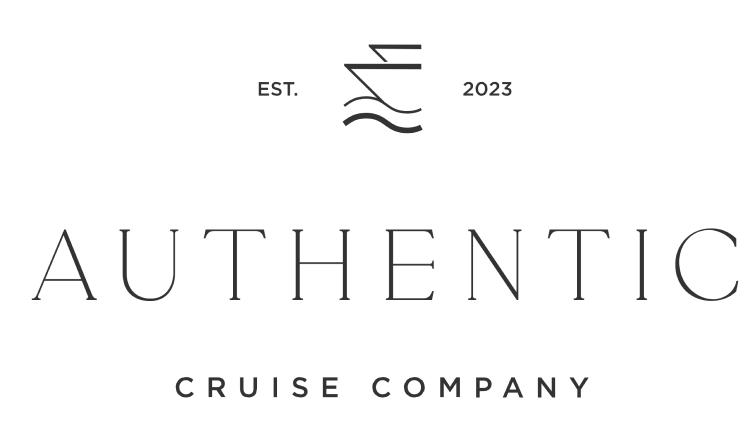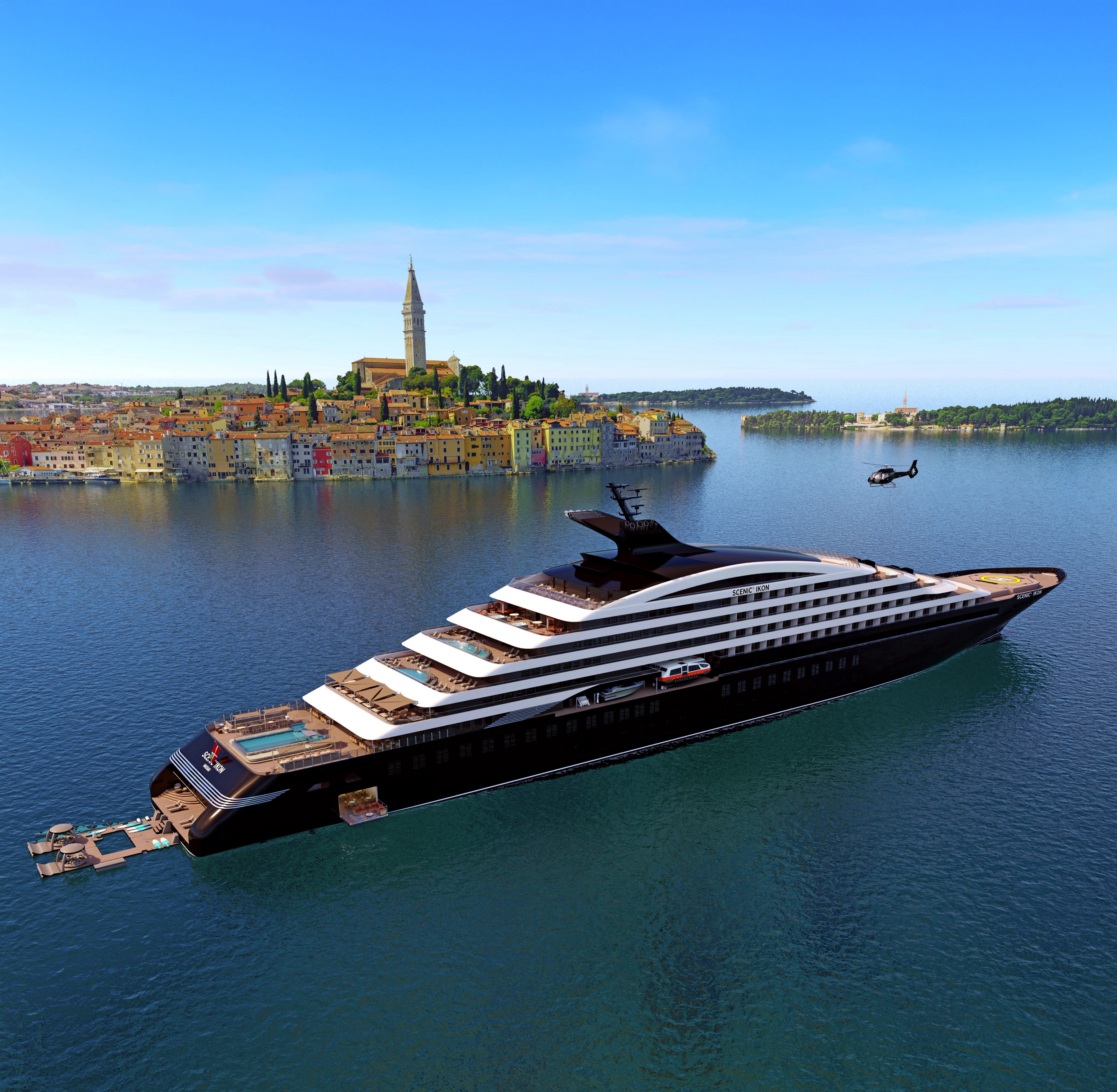Itinerary
Italy’s vibrant capital lives in the present, but no other city on earth evokes its past so powerfully. For over 2,500 years, emperors, popes, artists, and common citizens have left their mark here. Archaeological remains from ancient Rome, art-stuffed churches, and the treasures of Vatican City vie for your attention, but Rome is also a wonderful place to practice the Italian-perfected il dolce far niente, the sweet art of idleness. Your most memorable experiences may include sitting at a caffè in the Campo de’ Fiori or strolling in a beguiling piazza.
Day programme:
Welcome to Rome, the ‘Eternal City’, where ancient monuments and elaborate churches sit alongside busy cafes and designer boutiques. The port of Civitavecchia, dates to the second century and remains one of the busiest ports in the Mediterranean. Your next-generation first-in-its-class Discovery Yacht, Scenic Ikon, will be waiting for you here. Upon arrival you’ll be warmly welcomed by the Captain and crew. Meet your personal butler and settle into your spacious suite, then toast the beginning of your voyage as you sail away from this ancient harbour. Please book your flight to arrive into Rome prior to 01:00 PM.
Livorno is a gritty city with a long and interesting history. In the early Middle Ages it alternately belonged to Pisa and Genoa. In 1421 Florence, seeking access to the sea, bought it. Cosimo I (1519–74) started construction of the harbor in 1571, putting Livorno on the map. After Ferdinando I de’ Medici (1549–1609) proclaimed Livorno a free city, it became a haven for people suffering from religious persecution; Roman Catholics from England and Jews and Moors from Spain and Portugal, among others, settled here. The Quattro Mori (Four Moors), also known as the Monument to Ferdinando I, commemorates this. (The statue of Ferdinando I dates from 1595, the bronze Moors by Pietro Tacca from the 1620s.)In the following centuries, and particularly in the 18th, Livorno boomed as a port. In the 19th century the town drew a host of famous Britons passing through on their grand tours. Its prominence continued up to World War II, when it was heavily bombed. Much of the town’s architecture, therefore, postdates the war, and it’s somewhat difficult to imagine what it might have looked like before. Livorno has recovered from the war, however, as it’s become a huge point of departure for container ships, as well as the only spot in Tuscany for cruise ships to dock for the day.Most of Livorno’s artistic treasures date from the 17th century and aren’t all that interesting unless you dote on obscure baroque artists. Livorno’s most famous native artist, Amedeo Modigliani (1884–1920), was of much more recent vintage. Sadly, there’s no notable work by him in his hometown.There may not be much in the way of art, but it’s still worth strolling around the city. The Mercato Nuovo, which has been around since 1894, sells all sorts of fruits, vegetables, grains, meat, and fish. Outdoor markets nearby are also chock-full of local color. The presence of Camp Darby, an American military base just outside town, accounts for the availability of many American products.If you have time, Livorno is worth a stop for lunch or dinner at the very least.
Day programme:
The city of Livorno has been welcoming sailors and traders from around the globe for over 400 years. As one of Italy's most vibrant port cities, Livorno serves as the gateway to the magnificent Tuscany region, renowned for its picturesque landscapes, delectable cuisine, and rich artistic heritage. Located conveniently close to Florence and Pisa, both World Heritage-listed cities, Livorno offers easy access to these iconic destinations. Discover Florence’s Renaissance masterpieces, including the Duomo and Uffizi Gallery, or stand in the shadow of the Leaning Tower in historic Pisa.
One of the most photographed villages along the coast, with a decidedly romantic and affluent aura, Portofino has long been a popular destination for the rich and famous. Once an ancient Roman colony and taken by the Republic of Genoa in 1229, it’s also been ruled by the French, English, Spanish, and Austrians, as well as by marauding bands of 16th-century pirates. Elite British tourists first flocked to the lush harbor in the mid-1800s. Some of Europe’s wealthiest drop anchor in Portofino in summer, but they stay out of sight by day, appearing in the evening after buses and boats have carried off the day-trippers.There’s not actually much to do in Portofino other than stroll around the wee harbor, see the castle, walk to Punta del Capo, browse at the pricey boutiques, and sip a coffee while people-watching. However, weaving through picture-perfect cliffside gardens and gazing at yachts framed by the sapphire Ligurian Sea and the cliffs of Santa Margherita can make for quite a relaxing afternoon. There are also several tame, photo-friendly hikes into the hills to nearby villages.Unless you’re traveling on a deluxe budget, you may want to stay in Camogli or Santa Margherita Ligure rather than at one of Portofino’s few very expensive hotels. Restaurants and cafés are good but also pricey (don’t expect to have a beer here for much under €10).
Day programme:
The beautiful fishing village of Portofino is nestled on Italy's Riviera and is one of its most famous resort towns. Postcard-perfect and brimming with Mediterranean charm, Portofino is the epitome of la dolce vita. Brightly coloured buildings sit against crystal-clear water with lush pine-covered hills in the distance. Explore the luxury boutiques, dine on exquisitely fresh seafood and soak in the atmosphere of the exclusive Piazzetta, where superyachts line the harbour and celebrity sightings are not uncommon.
Calvi, Corsica’s slice of the Riviera, has been described by author Dorothy Carrington as “an oasis of pleasure on an otherwise austere island.” Calvi prospered by supplying products to Genoa; its citizens remained loyal supporters of Genoa long after the rest of the island declared independence. Calvi also claims to be the birthplace of Christopher Columbus. During the 18th century the town endured assaults from Corsican nationalists, including celebrated patriot Pasquale Paoli. Today Calvi sees a summertime invasion of tourists, drawn to the 6-km (4-mile) stretch of sandy white beach, impressive citadel overlooking the Old Town, lively restaurants, and buzzing nightlife.
Day programme:
Calvi, on the French island of Corsica, has a long and illustrious history. Founded in the 13th century, its fiery medieval citadel still stands above red tiled roofs. It’s been a tourist hotspot since the 1920s, thanks to its moon-shaped bay lined with a golden, sandy beach and forested mountains on the horizon. Today, Calvi has the feel of a chic resort on the French Riviera, with waterfront restaurants, luxury hotels and multi-million-dollar yachts at anchor. Explore the alleys of this historic old town, walk the ramparts of the citadel and find the house that is said to be the birthplace of Christopher Columbus. After a day of exploration, return to the comfort of your yacht where exceptional dining awaits — a perfect end to an unforgettable day.
On one of the best stretches of the Mediterranean, this classic luxury destination is one of the most sought-after addresses in the world. With all the high-rise towers you have to look hard to find the Belle Époque grace of yesteryear. But if you head to the town’s great 1864 landmark Hôtel de Paris—still a veritable crossroads of the buffed and befurred Euro-gentry—or enjoy a grand bouffe at its famous Louis XV restaurant, or attend the opera, or visit the ballrooms of the casino, you may still be able to conjure up Monaco’s elegant past. Prince Albert II, a political science graduate from Amherst College, traces his ancestry to Otto Canella, who was born in 1070. The Grimaldi dynasty began with Otto’s great-great-great-grandson, Francesco Grimaldi, also known as Frank the Rogue. Expelled from Genoa, Frank and his cronies disguised themselves as monks and in 1297 seized the fortified medieval town known today as Le Rocher (the Rock). Except for a short break under Napoléon, the Grimaldis have been here ever since, which makes them the oldest reigning family in Europe. In the 1850s a Grimaldi named Charles III made a decision that turned the Rock into a giant blue chip. Needing revenue but not wanting to impose additional taxes on his subjects, he contracted with a company to open a gambling facility. The first spin of the roulette wheel was on December 14, 1856. There was no easy way to reach Monaco then—no carriage roads or railroads—so no one came. Between March 15 and March 20, 1857, one person entered the casino—and won two francs. In 1868, however, the railroad reached Monaco, and it was filled with Englishmen who came to escape the London fog. The effects were immediate. Profits were so great that Charles eventually abolished all direct taxes. Almost overnight, a threadbare principality became an elegant watering hole for European society. Dukes (and their mistresses) and duchesses (and their gigolos) danced and dined their way through a world of spinning roulette wheels and bubbling champagne—preening themselves for nights at the opera, where such artists as Vaslav Nijinsky, Sarah Bernhardt, and Enrico Caruso came to perform. Along with the tax system, its sensational position on a broad, steep peninsula that bulges into the Mediterranean—its harbor sparkling with luxury cruisers, its posh mansions angling awnings toward the nearly perpetual sun—continues to draw the rich and famous. One of the latest French celebrities to declare himself “Monégasque,” thus giving up his French passport, is superchef Alain Ducasse, who said that he made the choice out of affection for Monaco rather than tax reasons. Pleasure boats vie with luxury cruisers in their brash beauty and Titanic scale, and teams of handsome young men—themselves dyed blond and tanned to match—scour and polish every gleaming surface. As you might expect, all this glitz doesn’t come cheap. Eating is expensive, and even the most modest hotels cost more here than in nearby Nice or Menton. As for taxis, they don’t even have meters so you are completely at the driver’s mercy (with prices skyrocketing during events such as the Grand Prix). For the frugal, Monaco is the ultimate day-trip, although parking is as coveted as a room with a view. At the very least you can afford a coffee at Starbucks. The harbor district, known as La Condamine, connects the new quarter, officially known as Monte Carlo with Monaco-Ville (or Le Rocher), a medieval town on the Rock, topped by the palace, the cathedral, and the Oceanography Museum. Have no fear that you’ll need to climb countless steps to get to Monaco-Ville, as there are plenty of elevators and escalators climbing the steep cliffs. But shuttling between the lovely casino grounds of Monte Carlo and Old Monaco, separated by a vast port, is a daunting proposition for ordinary mortals without wings, so hop on the No. 1 bus from Saint Roman, or No. 2 from the Jardin Exotique – Both stop at Place du Casino and come up to Monaco Ville.
Day programme:
Monte Carlo is the epitome of luxury and elegance, nestled within the principality of Monaco. Explore the opulent streets lined with designer boutiques and bask in the Mediterranean sun along the picturesque coastline. With its world-class entertainment, exclusive clubs, and prestigious events, Monte Carlo captivates visitors with its timeless allure and sophistication. Whether you're seeking excitement at the famous Casino de Monte-Carlo or simply relaxation in the lap of luxury, an unforgettable late-night stay here awaits. Back on board, unwind and enjoy a beautifully curated meal — crafted with care, served with elegance and enjoyed at your own pace
Day programme:
Tucked along the coast of Provence, Bandol is a charming seaside town known for its serene beaches, colourful harbour and renowned vineyards. Stroll the lively promenade, browse local markets or relax at a waterfront café. Wine lovers may recognise Bandol for its celebrated rosés and full-bodied reds, some of the finest in the region. As evening falls, unwind with live entertainment on board — the perfect way to reflect on the day’s discoveries in a refined and relaxed setting. Later this evening, we set sail for Marseille, where you’ll enjoy an overnight stay.
Since being designated a European Capital of Culture for 2013, with an estimated €660 million of funding in the bargain, Marseille has been in the throes of an extraordinary transformation, with no fewer than five major new arts centers, a beautifully refurbished port, revitalized neighborhoods, and a slew of new shops and restaurants. Once the underdog, this time-burnished city is now welcoming an influx of weekend tourists who have colonized entire neighborhoods and transformed them into elegant pieds-à-terre (or should we say, mer). The second-largest city in France, Marseille is one of Europe’s most vibrant destinations. Feisty and fond of broad gestures, it is also as complicated and as cosmopolitan now as it was when a band of Phoenician Greeks first sailed into the harbor that is today’s Vieux Port in 600 BC. Legend has it that on that same day a local chieftain’s daughter, Gyptis, needed to choose a husband, and her wandering eyes settled on the Greeks’ handsome commander Protis. Her dowry brought land near the mouth of the Rhône, where the Greeks founded Massalia, the most important Continental shipping port in antiquity. The port flourished for some 500 years as a typical Greek city, enjoying the full flush of classical culture, its gods, its democratic political system, its sports and theater, and its naval prowess. Caesar changed all that, besieging the city in 49 BC and seizing most of its colonies. In 1214 Marseille was seized again, this time by Charles d’Anjou, and was later annexed to France by Henri IV in 1481, but it was not until Louis XIV took the throne that the biggest transformations of the port began; he pulled down the city walls in 1666 and expanded the port to the Rive Neuve (New Riverbank). The city was devastated by plague in 1720, losing more than half its population. By the time of the Revolution, Marseille was on the rebound once again, with industries of soap manufacturing and oil processing flourishing, encouraging a wave of immigration from Provence and Italy. With the opening of the Suez Canal in 1869, Marseille became the greatest boomtown in 19th-century Europe. With a large influx of immigrants from areas as exotic as Tangiers, the city quickly acquired the multicultural population it maintains to this day.
Since being designated a European Capital of Culture for 2013, with an estimated €660 million of funding in the bargain, Marseille has been in the throes of an extraordinary transformation, with no fewer than five major new arts centers, a beautifully refurbished port, revitalized neighborhoods, and a slew of new shops and restaurants. Once the underdog, this time-burnished city is now welcoming an influx of weekend tourists who have colonized entire neighborhoods and transformed them into elegant pieds-à-terre (or should we say, mer). The second-largest city in France, Marseille is one of Europe’s most vibrant destinations. Feisty and fond of broad gestures, it is also as complicated and as cosmopolitan now as it was when a band of Phoenician Greeks first sailed into the harbor that is today’s Vieux Port in 600 BC. Legend has it that on that same day a local chieftain’s daughter, Gyptis, needed to choose a husband, and her wandering eyes settled on the Greeks’ handsome commander Protis. Her dowry brought land near the mouth of the Rhône, where the Greeks founded Massalia, the most important Continental shipping port in antiquity. The port flourished for some 500 years as a typical Greek city, enjoying the full flush of classical culture, its gods, its democratic political system, its sports and theater, and its naval prowess. Caesar changed all that, besieging the city in 49 BC and seizing most of its colonies. In 1214 Marseille was seized again, this time by Charles d’Anjou, and was later annexed to France by Henri IV in 1481, but it was not until Louis XIV took the throne that the biggest transformations of the port began; he pulled down the city walls in 1666 and expanded the port to the Rive Neuve (New Riverbank). The city was devastated by plague in 1720, losing more than half its population. By the time of the Revolution, Marseille was on the rebound once again, with industries of soap manufacturing and oil processing flourishing, encouraging a wave of immigration from Provence and Italy. With the opening of the Suez Canal in 1869, Marseille became the greatest boomtown in 19th-century Europe. With a large influx of immigrants from areas as exotic as Tangiers, the city quickly acquired the multicultural population it maintains to this day.
Day programme:
The oldest city in France, Marseille dates to 600 BC. Today, it’s a fast-paced, modern city brimming with multicultural flavours, and flanked by breathtaking natural scenery and golden beaches. This is a place where grit and grandeur meet, offering a fascinating insight into contemporary French culture. Explore its ancient streets and diverse neighbourhoods, marvel at iconic landmarks such as the Basilique Notre-Dame de la Garde, and treat yourself to the freshest seafood and traditional delicacies. Marseille is also the gateway to the region of Provence, famous for its wine and cuisine. This evening, indulge in a world-class dining experience on board, with every detail thoughtfully prepared and every meal a moment to savour.
The fishing village of Sète serves as gateway to Montpellier, in the North. Other noteworthy destinations in this area include Carcassone, Aigues Mortes, the Abbaye de Fontfroide, and Pezenas. For a look at the real fisherman’s life, however, stay right where you are. Sète is the Mediterranean’s biggest fishing port. Canals winding through town make it fun to stroll around, and there are a number of good walking paths leading to the beach (about 30 minutes to the west). Although it’s small and unspectacular, Plage de la Corniche has calm, pristine waters that are perfect for swimming. For a panoramic view of the area, climb Mont St-Clair or Les Pierres Blanches and pick a beach to settle down on.
Day programme:
Often called the ‘Venice of Languedoc’, Sète is a vibrant port city woven with canals, colourful facades and a strong maritime spirit. Explore the bustling waterfront, watch fishing boats unload the day’s catch, or wander through the lively town centre filled with cafés, markets, and local charm. Seafood lovers will be in their element; Sète is famed for its fresh oysters and tielle, a savoury seafood pie. Tonight, enjoy a curated selection of live entertainment designed to complement your journey — from soothing melodies to vibrant performances that bring the spirit of your destination to life.
One of the best ways to arrive in Catalonia is by sea, especially via the Costa Brava. This coastline, also known as the Rugged or Wild Coast, stretches from Blanes to the French border. Its name aptly refers to the steep cliff of ancient twisted rocks, which runs its entire length and is bounded inland by the Catalan mountain ranges. The intensity of the coast’s colour, the ruggedness of the rocks and the scent of the plants all combine to add to its attraction. The history of this region is long and varied. Traces can be found of the advanced culture of the Iberians, Greeks, Romans, Visigoths and Arabs. With Wilfred I and the independence of Catalan countries, the Catalan dynasty was born. Later, in 1479, Catalonia became a part of unified Spain following the marriage of Isabel, Queen of Castile, and Fernando, King of Aragon. The port of Palamos, some 36 miles northeast of Barcelona, has been in existence for nearly 700 years thanks to its location on one of the deepest natural bays in the western Mediterranean. The town itself is the southernmost of a series of resorts popular with sun worshippers. For the most part, Palamos has managed to retain some of the charm of a fishing village. The port also serves as a gateway to such inland locations as Girona, the capital of the province. Art lovers may want to visit Figueras, famous for its bizarre Teatre-Museu Dali, the foremost of a series of sites associated with the eccentric surrealist artist, Salvador Dali. If you choose to stay in Palamos, you can enjoy the pleasant atmosphere of the town or spend some time at a nearby beach. The town has a long seagoing tradition and busy harbour. The fish auction, prompted by the arrival of the fishing boats, is a spectacle worth seeing. The Fishing Museum illustrates the history and the life of the families who live off the sea.
Day programme:
Part of Spain’s Costa Brava, meaning ‘wild coast’, Palamós is an authentic working fishing village that beckons with Mediterranean charm and cultural richness. Explore the historic streets adorned with colourful buildings and quaint cafes, where the vibrant energy of local life fills the air. In nearby Figueres, the renowned Dalí Theatre-Museum brings the surreal works of Salvador Dalí to life in a mesmerising display of artistry. Immerse yourself in the masterpieces of one of the most influential artists of the 20th century. Later this evening, we set sail for Barcelona, where you’ll enjoy an overnight stay.
The infinite variety of street life, the nooks and crannies of the medieval Barri Gòtic, the ceramic tile and stained glass of Art Nouveau facades, the art and music, the throb of street life, the food (ah, the food!)—one way or another, Barcelona will find a way to get your full attention. The capital of Catalonia is a banquet for the senses, with its beguiling mix of ancient and modern architecture, tempting cafés and markets, and sun-drenched Mediterranean beaches. A stroll along La Rambla and through waterfront Barceloneta, as well as a tour of Gaudí’s majestic Sagrada Famíliaand his other unique creations, are part of a visit to Spain’s second-largest city. Modern art museums and chic shops call for attention, too. Barcelona’s vibe stays lively well into the night, when you can linger over regional wine and cuisine at buzzing tapas bars.
The infinite variety of street life, the nooks and crannies of the medieval Barri Gòtic, the ceramic tile and stained glass of Art Nouveau facades, the art and music, the throb of street life, the food (ah, the food!)—one way or another, Barcelona will find a way to get your full attention. The capital of Catalonia is a banquet for the senses, with its beguiling mix of ancient and modern architecture, tempting cafés and markets, and sun-drenched Mediterranean beaches. A stroll along La Rambla and through waterfront Barceloneta, as well as a tour of Gaudí’s majestic Sagrada Famíliaand his other unique creations, are part of a visit to Spain’s second-largest city. Modern art museums and chic shops call for attention, too. Barcelona’s vibe stays lively well into the night, when you can linger over regional wine and cuisine at buzzing tapas bars.
Day programme:
Your Signature Yacht Cruise ends this morning in the vibrant city of Barcelona, capital of the region of Catalonia. This spectacular city is known for its culinary delights, thriving art scene and architectural wonders such as Gaudi’s iconic creation, La Sagrada Familia. Disembark after breakfast as you farewell your fellow guests and crew, taking with you memories of a truly unforgettable journey. Please book your flight to depart out of Barcelona after 12:00 PM.#Spa treatments and services at additional cost. Daily activities may be subject to change; please consult your Daily Wonder for updates. +All drinks on board, including those stocked in your mini bar, are included, except for a very small number of rare, fine and vintage wines, Champagnes and spirits. Specialty restaurants require a reservation, enquire on board.^Experiences on board our helicopters and submersible are at additional cost, subject to regulatory approval, availability, weight restrictions, medical approval and weather conditions.Helicopter not operational in France. Submersible not operational in Europe.The itinerary is a guide only and may be amended for operational reasons. As such Scenic cannot guarantee the voyage will operate unaltered from the itinerary stated above. Please refer to our terms and conditions for further information.
Ship features

Ikon Penthouse
Your own private residence at sea.
The lounge is thoughtfully appointed areas for relaxation, dining, and entertaining, with a fully appointed bar island: delight in anything your heart desires — from crafted cocktails to wellness-inspired refreshments and light dining — all served discreetly by your private butler. The suite features a master bedroom plus a wellness studio with in-suite ESPA spa services and private fitness amenities. Which can transform into a second bedroom for family or guests. The bathroom is enhanced with steam and infrared experiences for ultimate wellbeing and indulgence with full-size baths and double vanities, ensuring the utmost in comfort and indulgence. A spacious walk-in wardrobe and private Glam Bar, fully appointed with Dyson’s advanced hair care tools and elevated ESPA amenities, complete the suite, offering effortless luxury and the ultimate in oceanfront living. An expansive terrace with Jacuzzi, private cabana, and outdoor lounge and dining areas provides the perfect space to relax or entertain under open skies.

Grand Terrace Suite
Enjoy enhanced space and bespoke amenities. Each suite features spacious walk-in wardrobes and Glam Bars. These top-tier suites further elevate indulgence with expansive, fully appointed Butler Bars, offering a personalised selection of refreshments and in-suite dining options. Full-size bath, double vanity, Glam bar, and elevated ESPA amenities, delivering unparalleled comfort and refined ultra-luxury. A private terrace with jacuzzi, cabana and dining.
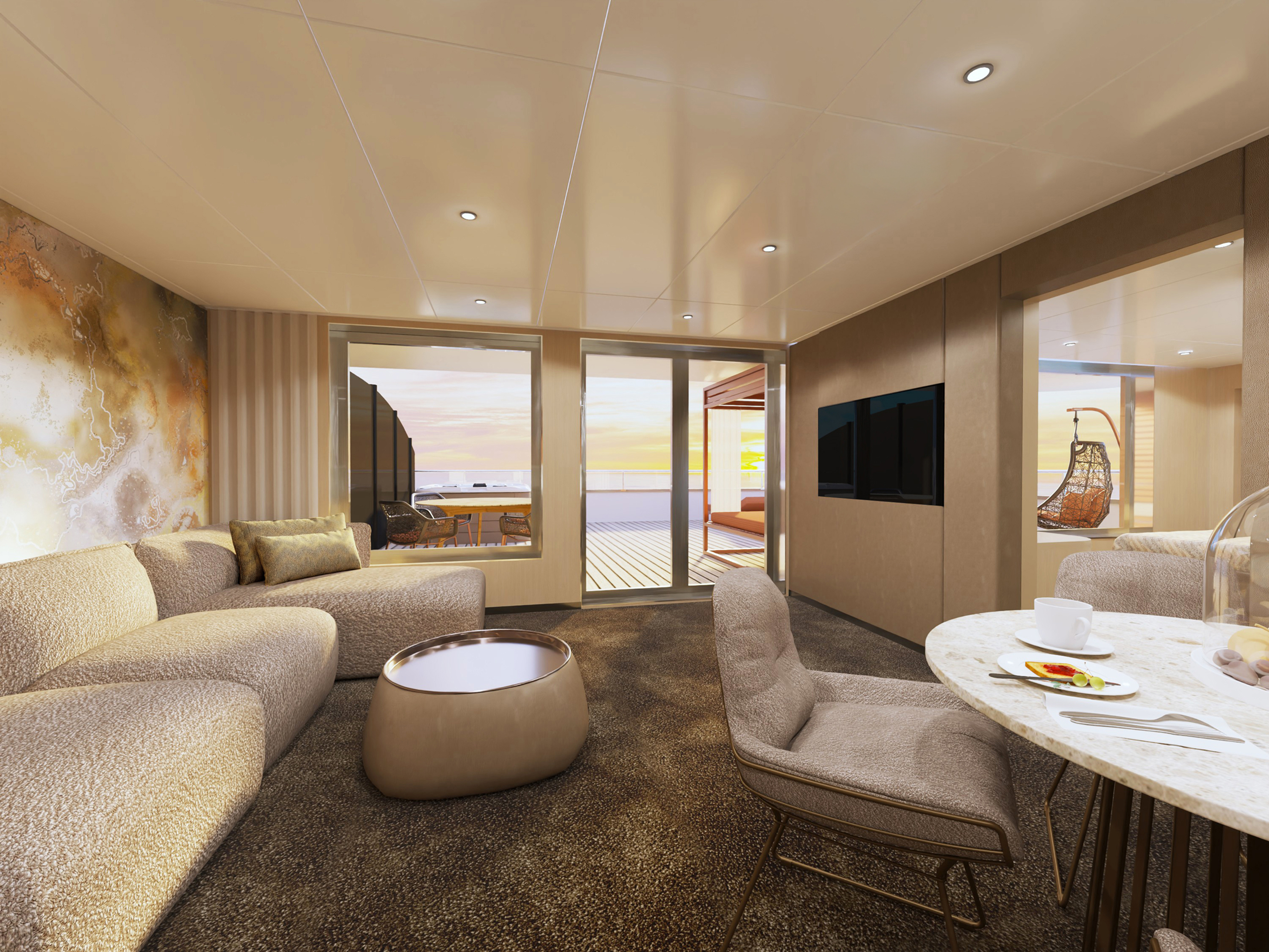
Scenic Yacht Suite
Enjoy enhanced space and bespoke amenities. Each suite features spacious walk-in wardrobes and Glam Bars. These top-tier suites further elevate indulgence with expansive, fully appointed Butler Bars, offering a personalised selection of refreshments and in-suite dining options. Full-size bath, double vanity, Glam bar, and elevated ESPA amenities, delivering unparalleled comfort and refined ultra-luxury. A private terrace with jacuzzi, cabana and dining.

Horizon Suite
Separate bedroom for enhanced privacy. Full-size bath, double vanity, walk-in wardrobe, and Glam Bar, ensuring every detail is designed for comfort, privacy, and indulgence.

Signature Spa Suite
A romantic retreat for couples, featuring a luxurious four-poster bed and indulgent wellness bathroom with a soaking spa bath, steam shower, soothing light therapy, and ocean vista, double vanity, and elevated ESPA spa amenities. Every detail is designed for shared relaxation and rejuvenation.
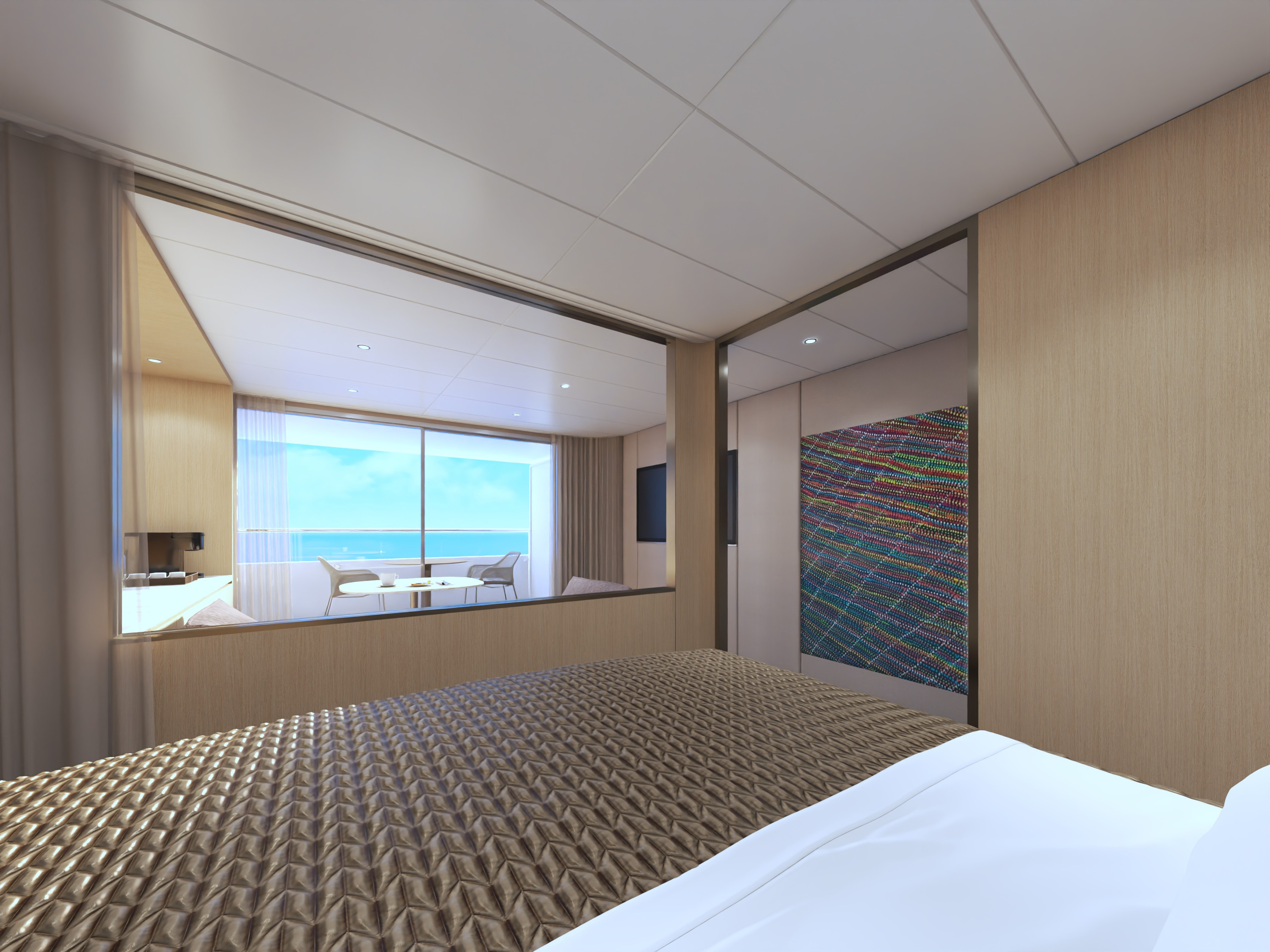
Master One Bedroom Suite
Separate bedrooms for enhanced privacy. Master Suite also offering adjoining suites for family accommodation. Full-size bath, double vanity, walk-in wardrobe, and Glam Bars, ensuring every detail is designed for comfort, privacy, and indulgence.
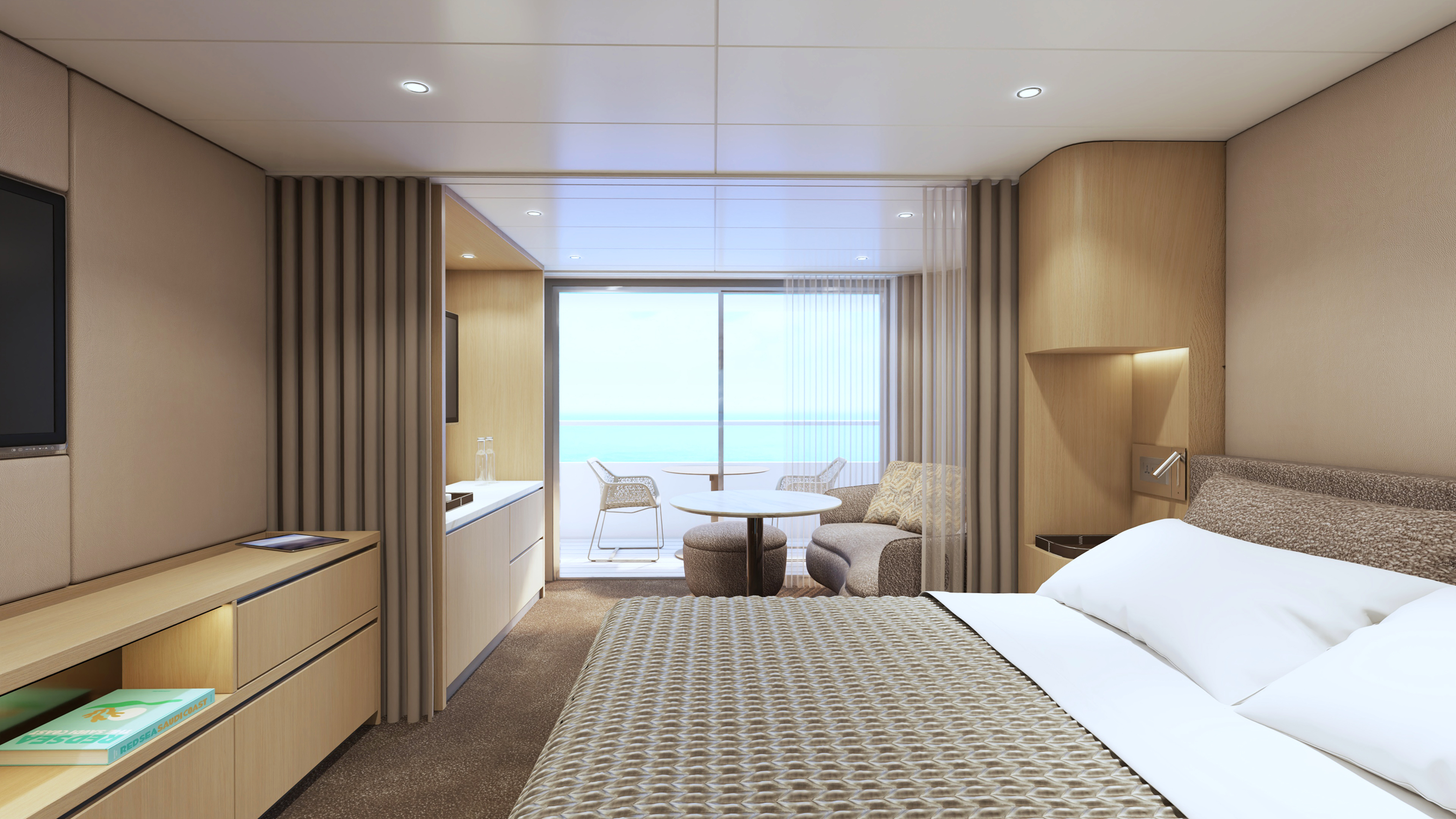
Grand Deluxe Verandah Suite
Separate sleep and lounge areas for the ultimate comfort. Enhanced spaces and elevated amenities. Walk-in wardrobes, Glam Bar, and fully appointed all-inclusive Butler Bars with custom tables for private in-suite dining.

Deluxe Verandah Suite
Separate sleep and lounge areas for the ultimate comfort. Enhanced spaces and elevated amenities. Walk-in wardrobes, Glam Bar, and fully appointed all-inclusive Butler Bars with custom tables for private in-suite dining.
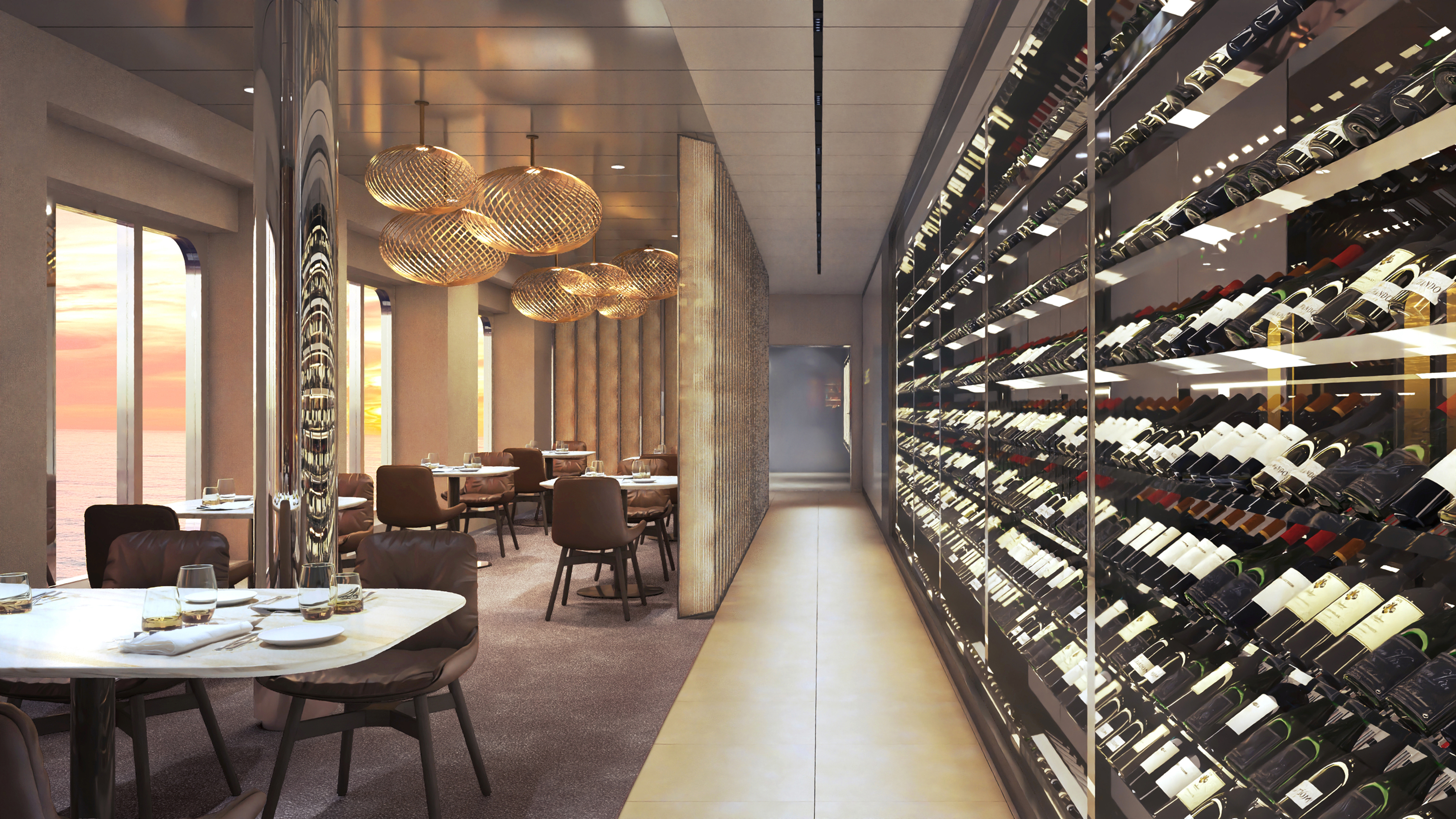
Elements
Expertly prepared Italian classics, premium steaks, and fresh seafood in an elegant yet relaxed atmosphere, with sweeping ocean views, exquisite flavours meet breathtaking scenery.
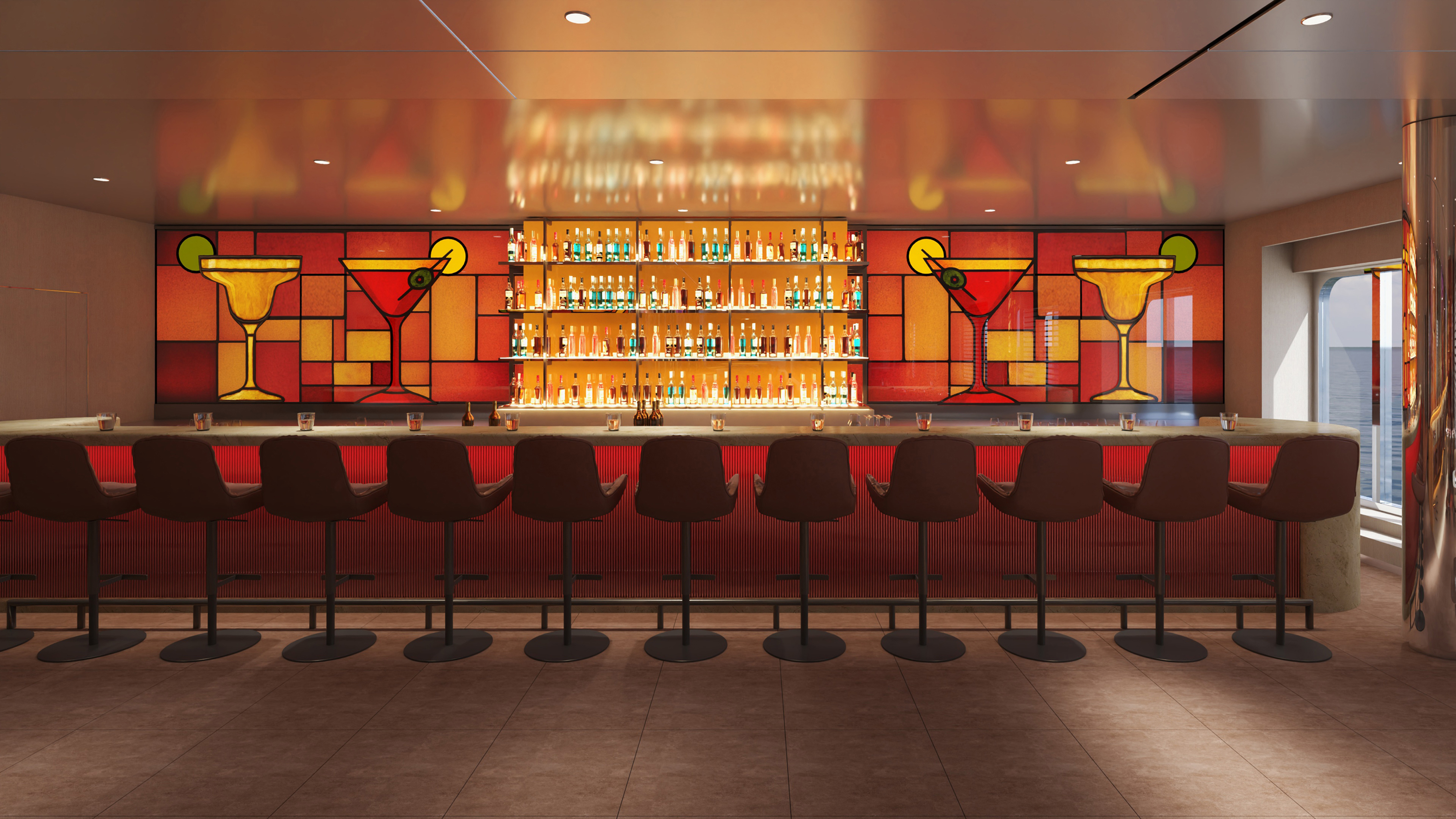
Textura
Expertly prepared Italian classics, premium steaks, and fresh seafood in an elegant yet
relaxed atmosphere, with sweeping ocean views, exquisite flavours meet breathtaking scenery.

Lumière
Fine-dining restaurant, modern French cuisine is elevated to extraordinary heights in an intimate, refined setting, enhanced by an exclusive Champagne experience.

The Yacht Club
A casual dining with a new al fresco terrace – from hot entrées to crisp salads, roast meats, seasonal seafood dishes and artisanal pastries. On special evenings, it transforms into a spectacular venue for gala celebrations, pairing exceptional cuisine with sweeping ocean views.

Azure Café & Bar
Embrace all-day dining with savoury light meals, delectable miniature desserts, hot drinks and premium beverages.

Koko’s Asian Fusion, Sushi & Night Market
For a contemporary twist, these experiences reimagine Asian traditions with dynamic flavours, lively presentation, and an energetic, immersive atmosphere.
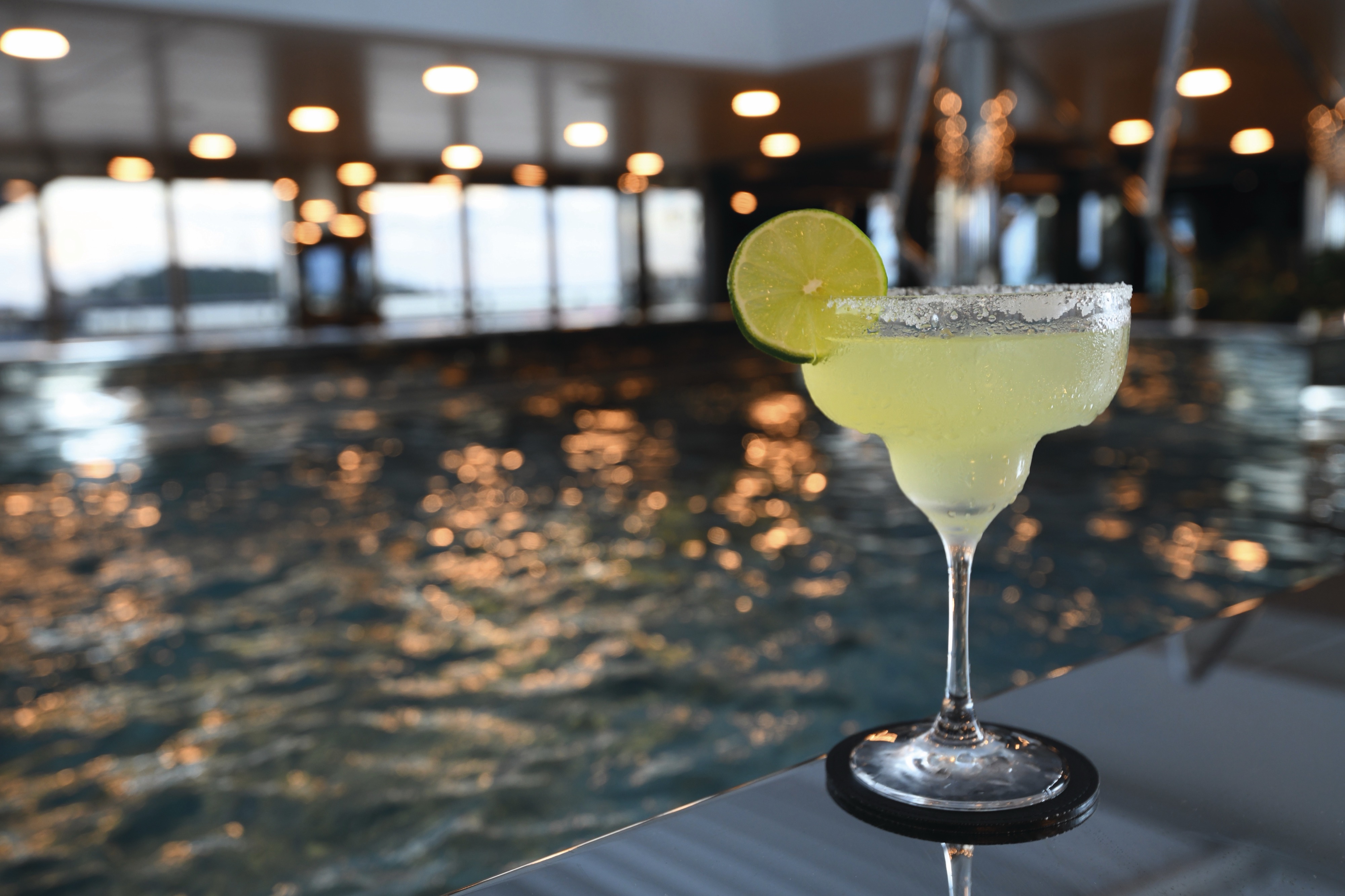
Chef’s Table
A unique culinary concept at sea, this invitation-only dégustation experience showcases the innovative cooking techniques of the Executive Chef.
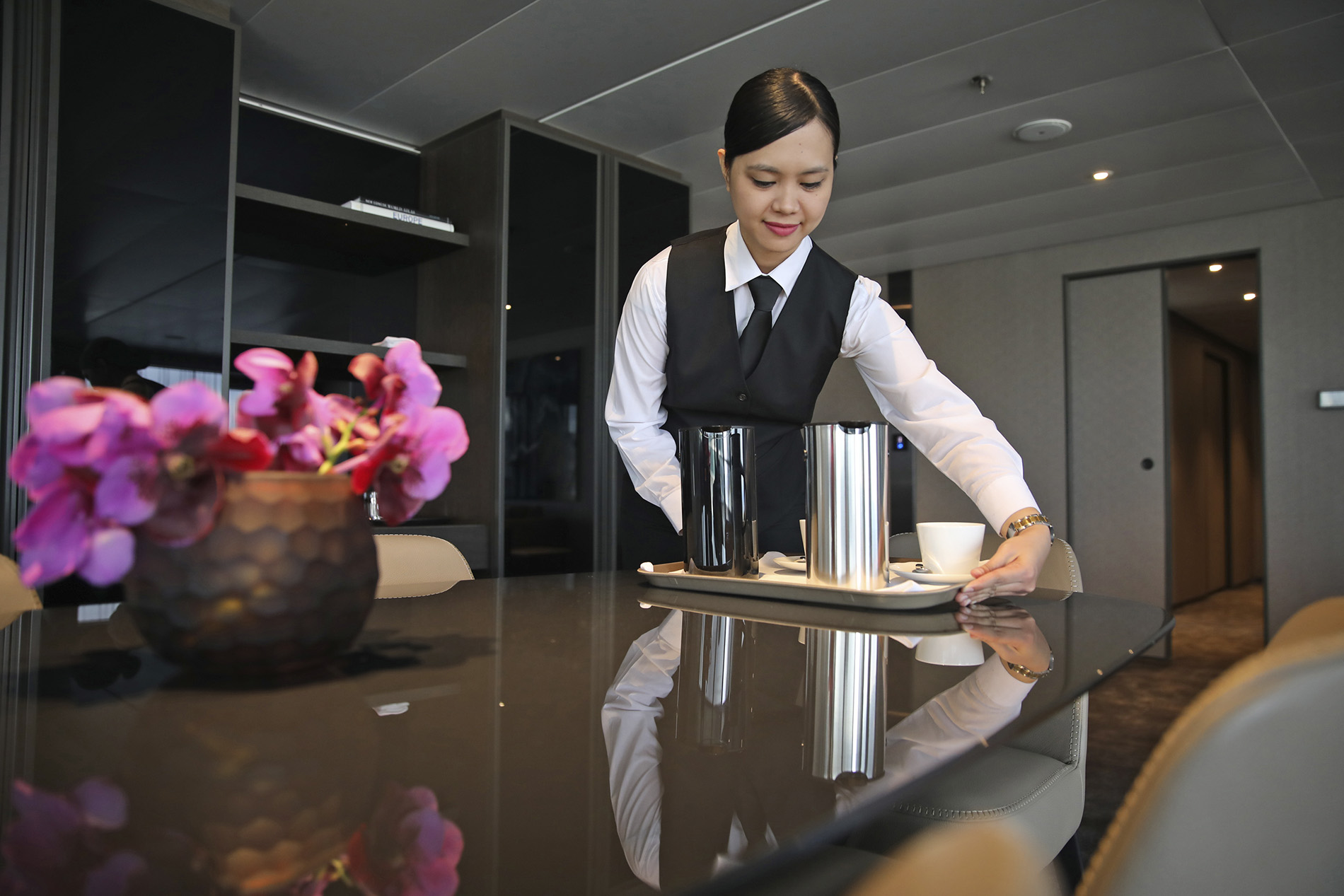
In-Suite Dining
24-hour room service for all suites.

Summa
Elevates local ingredients in share-style plates.

Crustory
Transforms pizza into a bold culinary exploration.
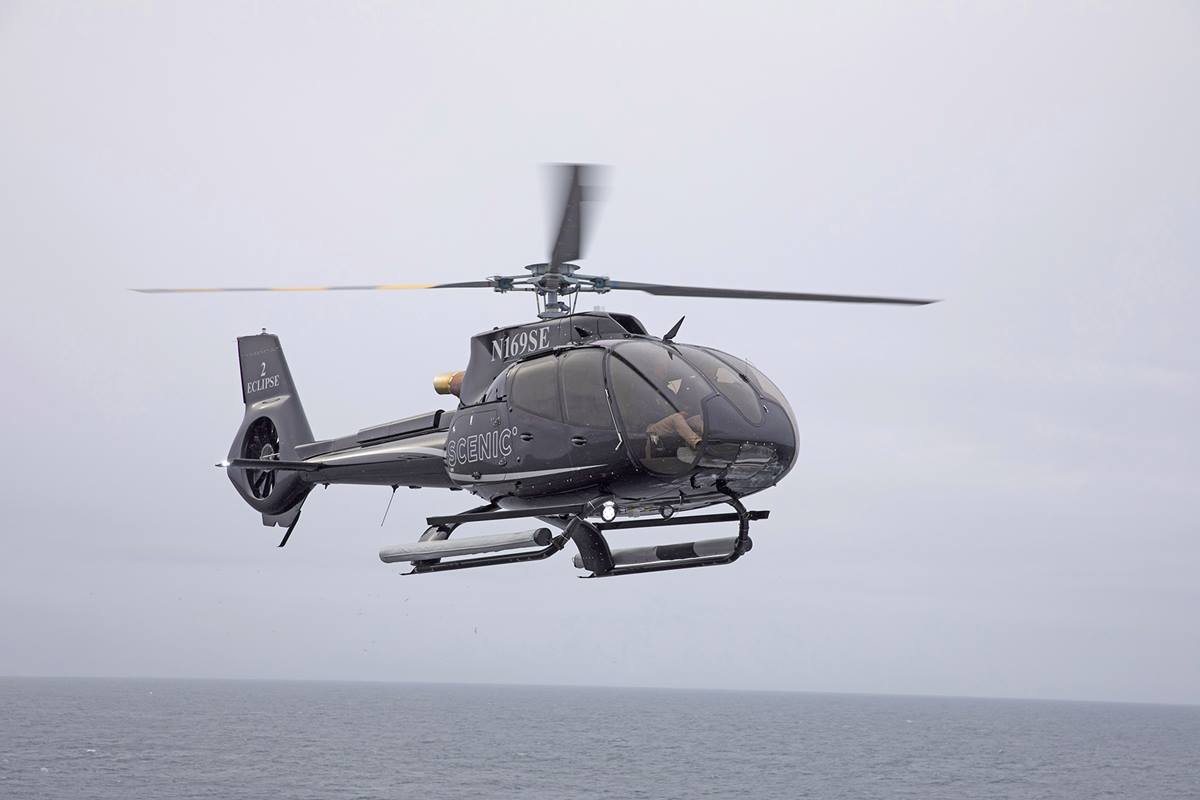
Helicopter Experiences
Two Airbus H130-T2 helicopters for up to 6 guests plus pilot. The quietest in the sky. Outstanding visibility from all seats, expansive windows and large, wrap-around windscreen. Noise cancelling Bose headphones.
Guests can elevate their voyage of discovery to the next level through thoughtfully curated helicopter experiences. With exclusive landings at prestigious golf courses, celebrated local restaurants and special access to historic cultural sites.
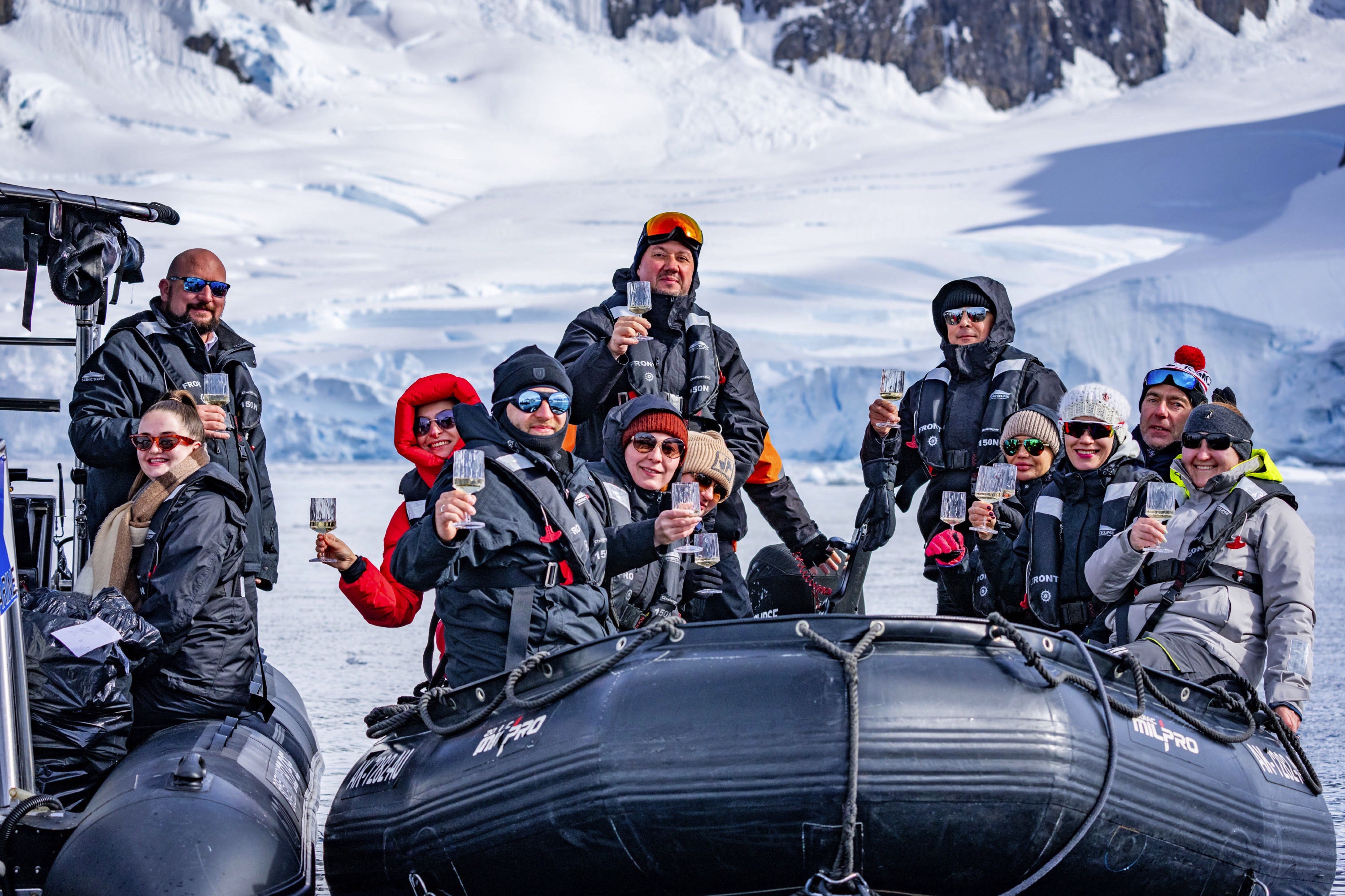
Discovery Team
Led by Director of Discovery Operations, Jason Flesher, the Discovery Team ensures unparalleled exploration and rich cultural immersion on Expedition and Discovery Voyages.
Our team of up to 20 specialists on Expedition Voyages, and up to 15 on Discovery Voyages, spans fields like history, biology, archaeology, naturalism, geology and photography. Enhancing your experience with their passion and expertise.
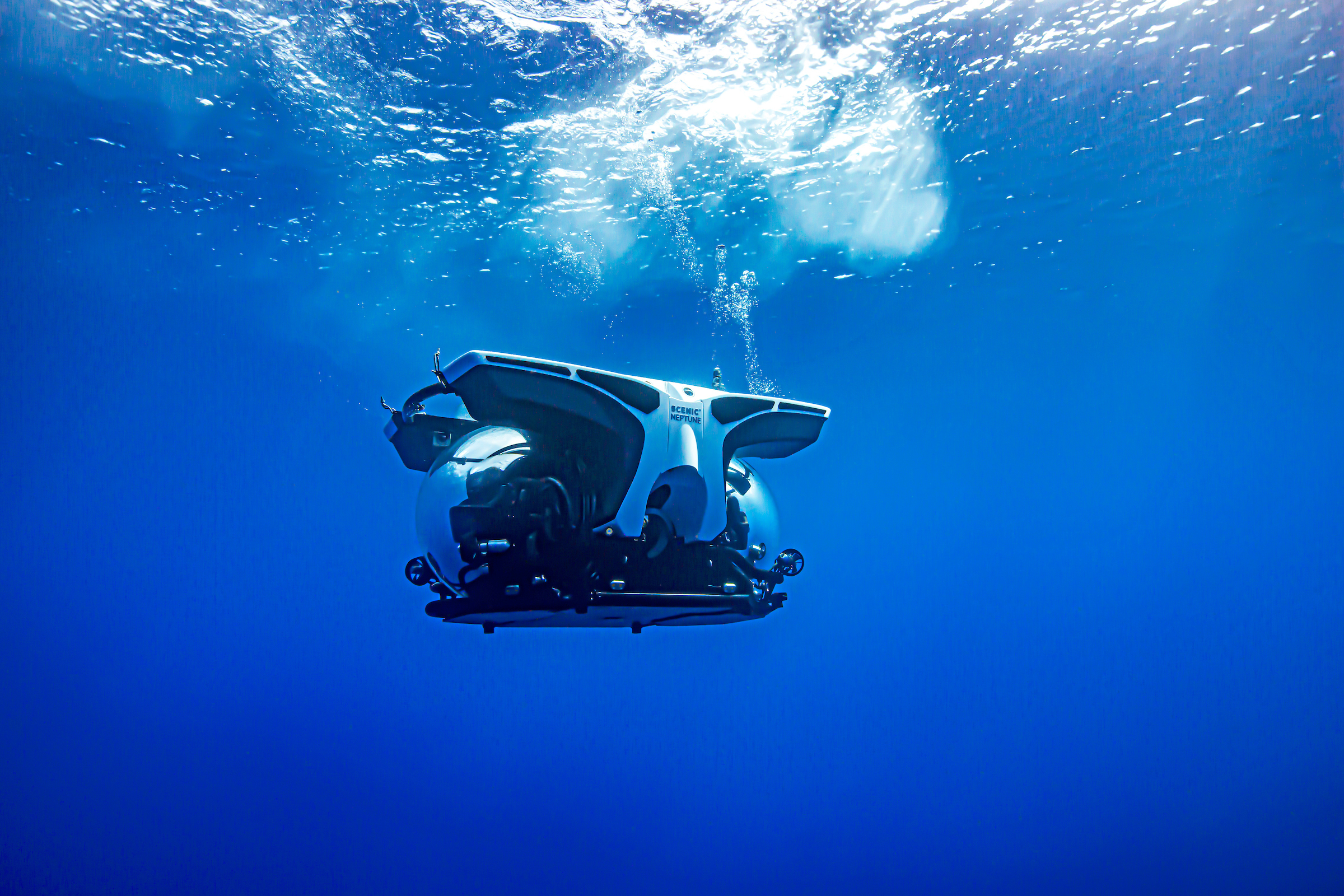
Scenic Neptune
Scenic Neptune III Triton AVA certified up to 200m, dives up to 100m for the best viewing experience. Up to eight guests plus pilot. 360 degree panoramic views, acrylic sphere. Will operate in Antarctica on Scenic Ikon.
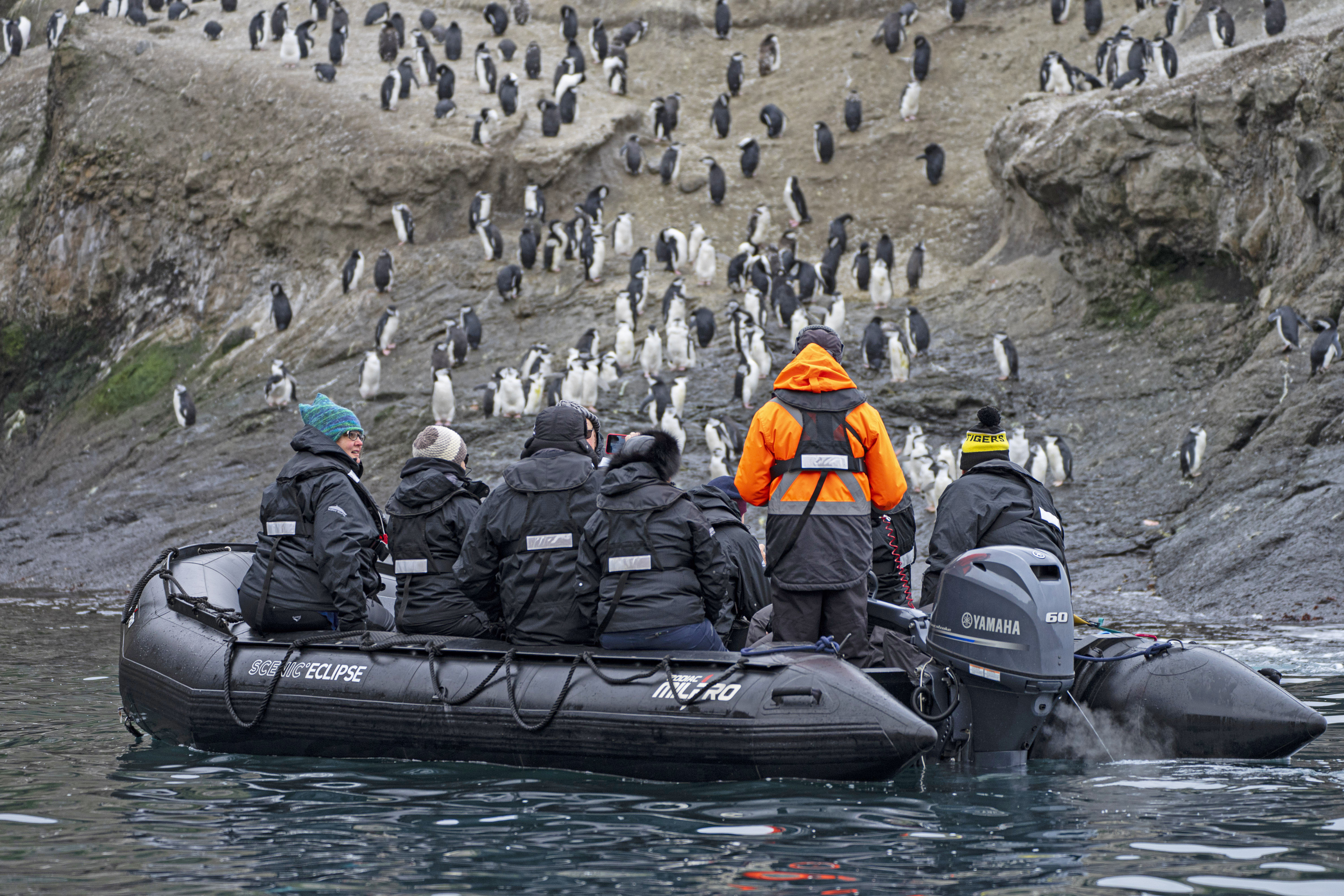
Zodiacs
The Discovery Team are expert operators of our fleet of Zodiacs. On both Expedition and Discovery Voyages the team will guide guests on Zodiac excursions to view stunning coastlines and wildlife, as well as onshore landings.
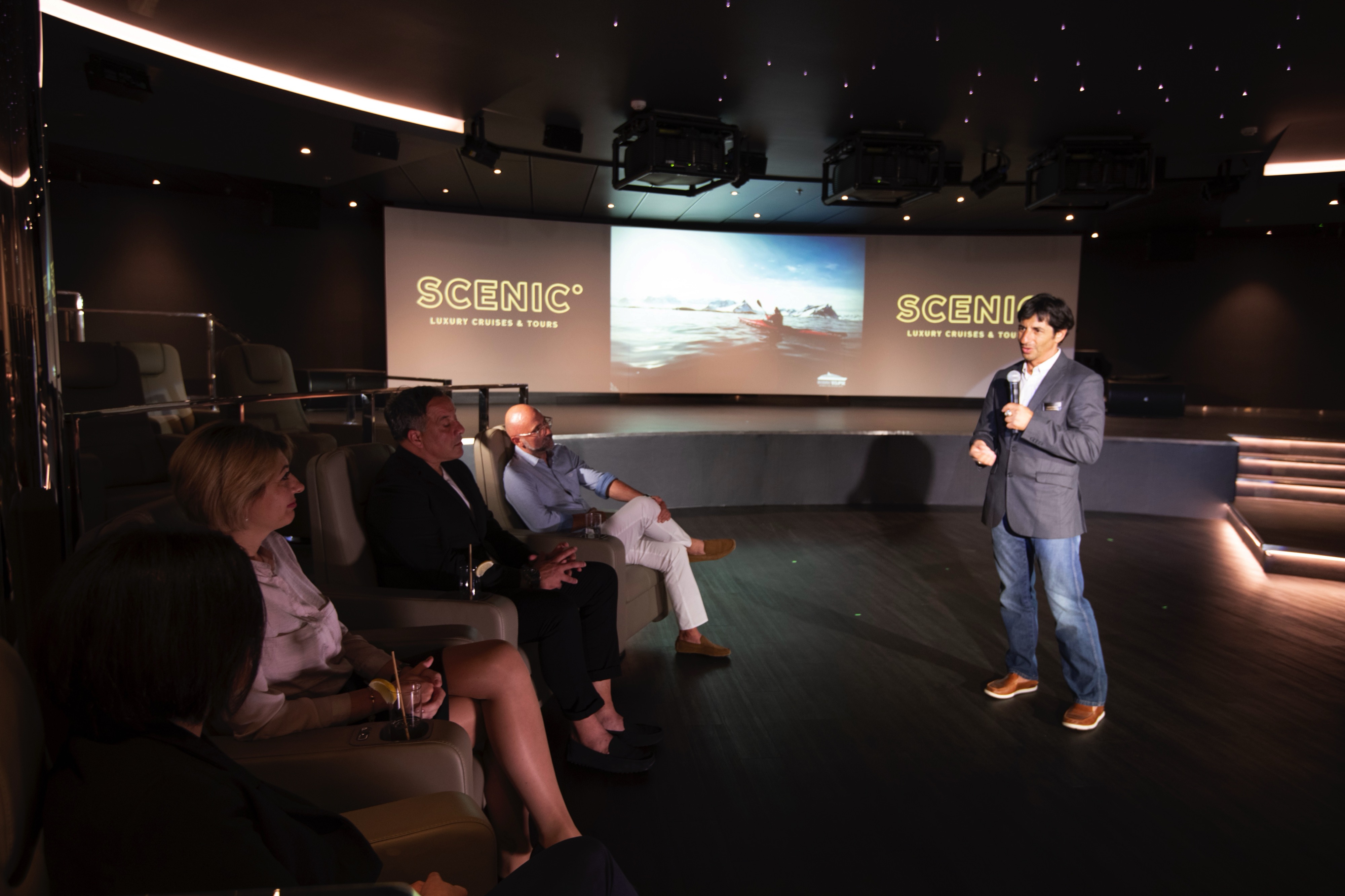
Education Programs
Learn about the unique wildlife, landscapes, history and culture of your destination from our knowledgeable experts during enriching lectures and education programs, hosted in the Discovery Yacht’s impressive state-of-the-art theatre.
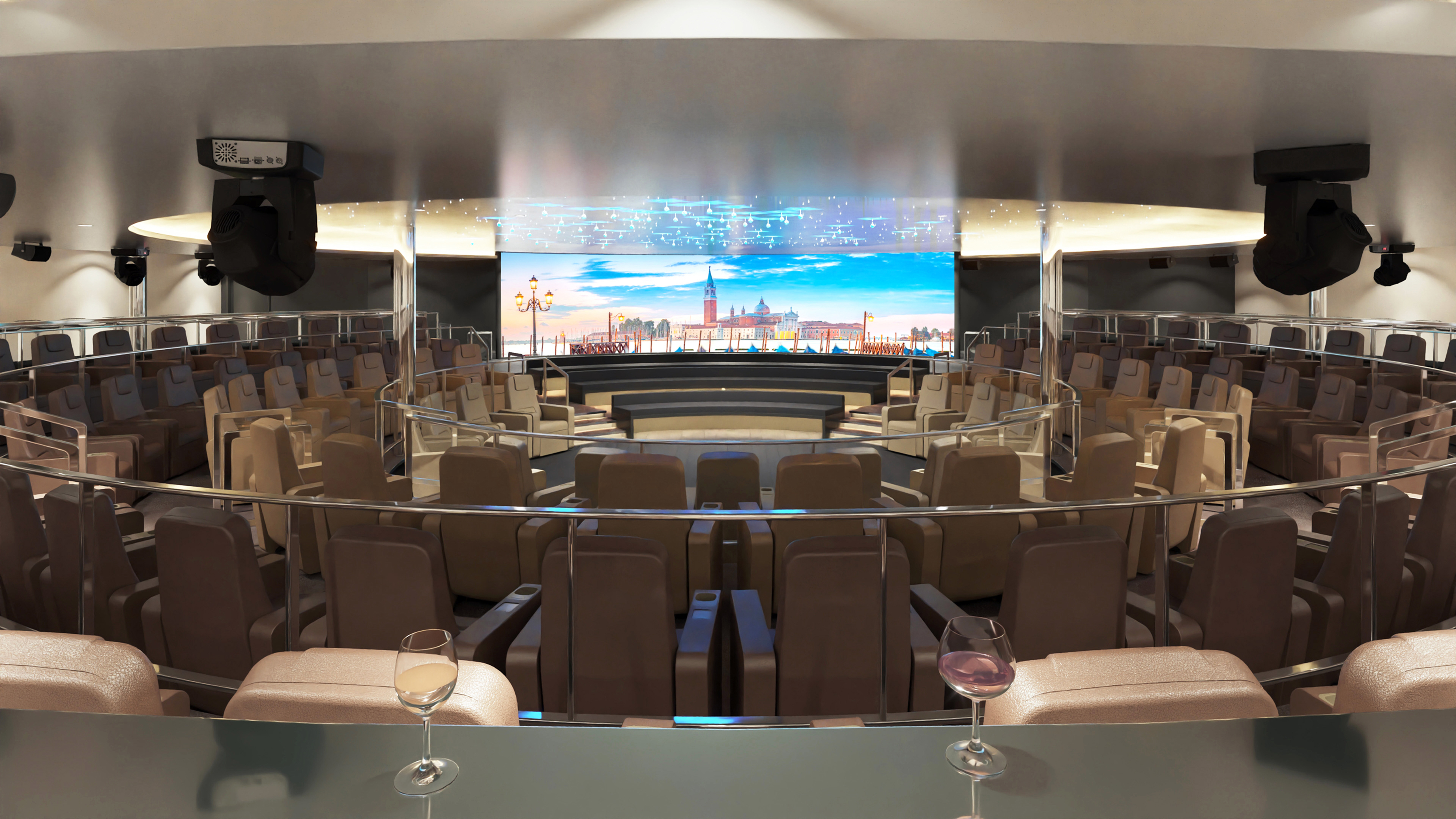
Theatre
Innovative In-The-Round Theatre
Seating for all 270 guests for bespoke shows, culinary masterclassesand Discovery Team presentations come to life.

Unique Open Bridge
To meet the Captain and navigational team, gaining insights into Scenic Ikon’s cutting-edge design and technology. Whilst spending time with the Discovery Team as you search for wildlife and take in spectacular sights along your journey.

Scenic Lounge Bar
Social events and entertainment.

Observation Lounge
Read a book, play board games or relax with a specialty tea or coffee. Spot wildlife through Swarovski telescopes.
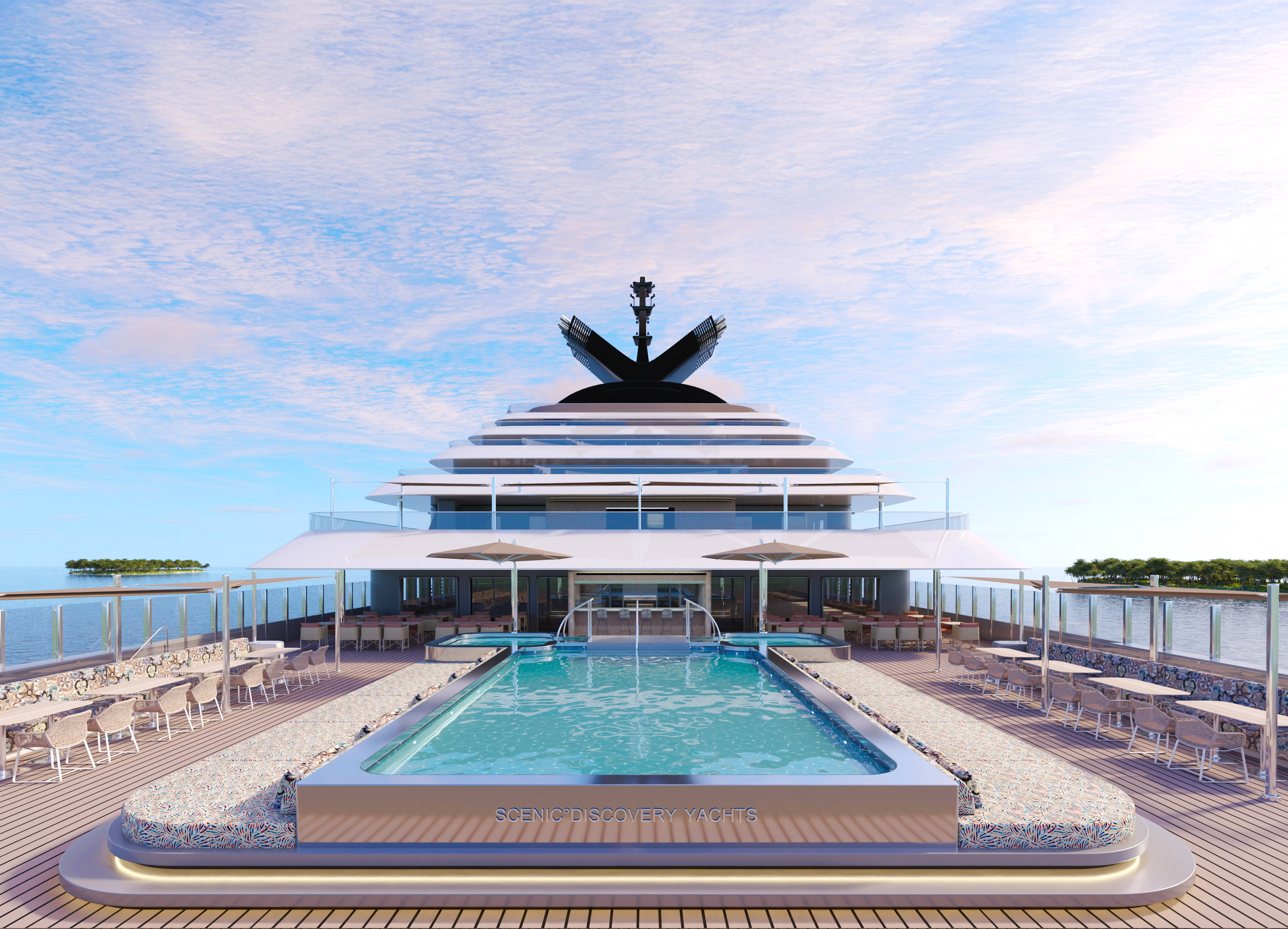
Pool and Terrace
Directly adjacent to Senses Spa. Relax in this tranquil pool admiring the spectacular landscapes, perhaps after a revitalising treatment or yoga class.
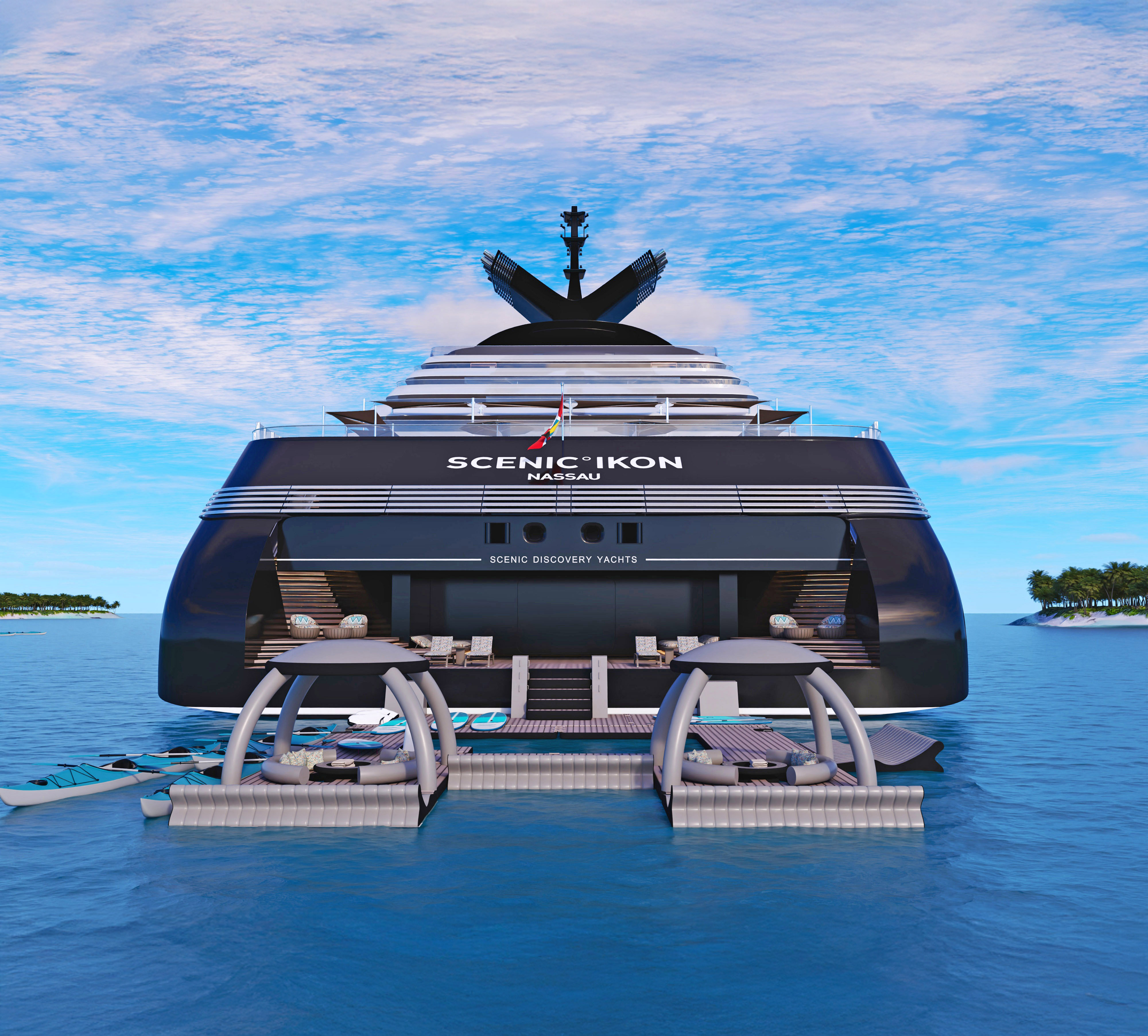
The Marina
A space to relax and exploring coastal wonders at your own pace with an array of water sports – paddleboard, dive with a Seabob, or take a refreshing ocean swim.
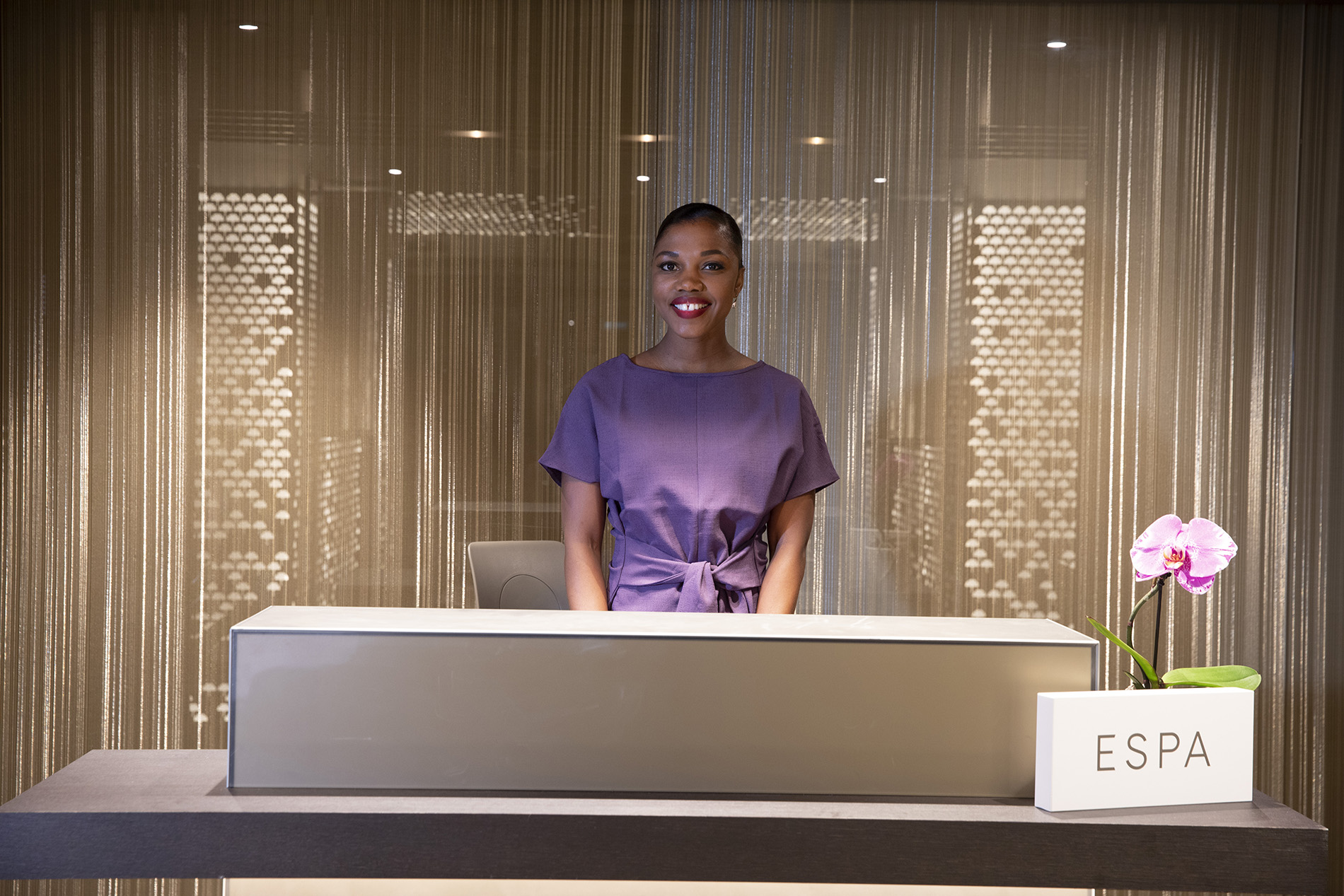
Senses Spa
Soak in the serenity with unsurpassed wellbeing experiences. Trained, specialist staff and state-of-the-art wellness facilities on board bring you a cruising experience like no other.

Senses Spa Pool Deck
Step into the rejuvenating Vitality Pool on Deck 6, directly adjacent to Senses Spa. Relax in this tranquil pool admiring the spectacular landscapes, perhaps after a revitalising treatment or yoga class.
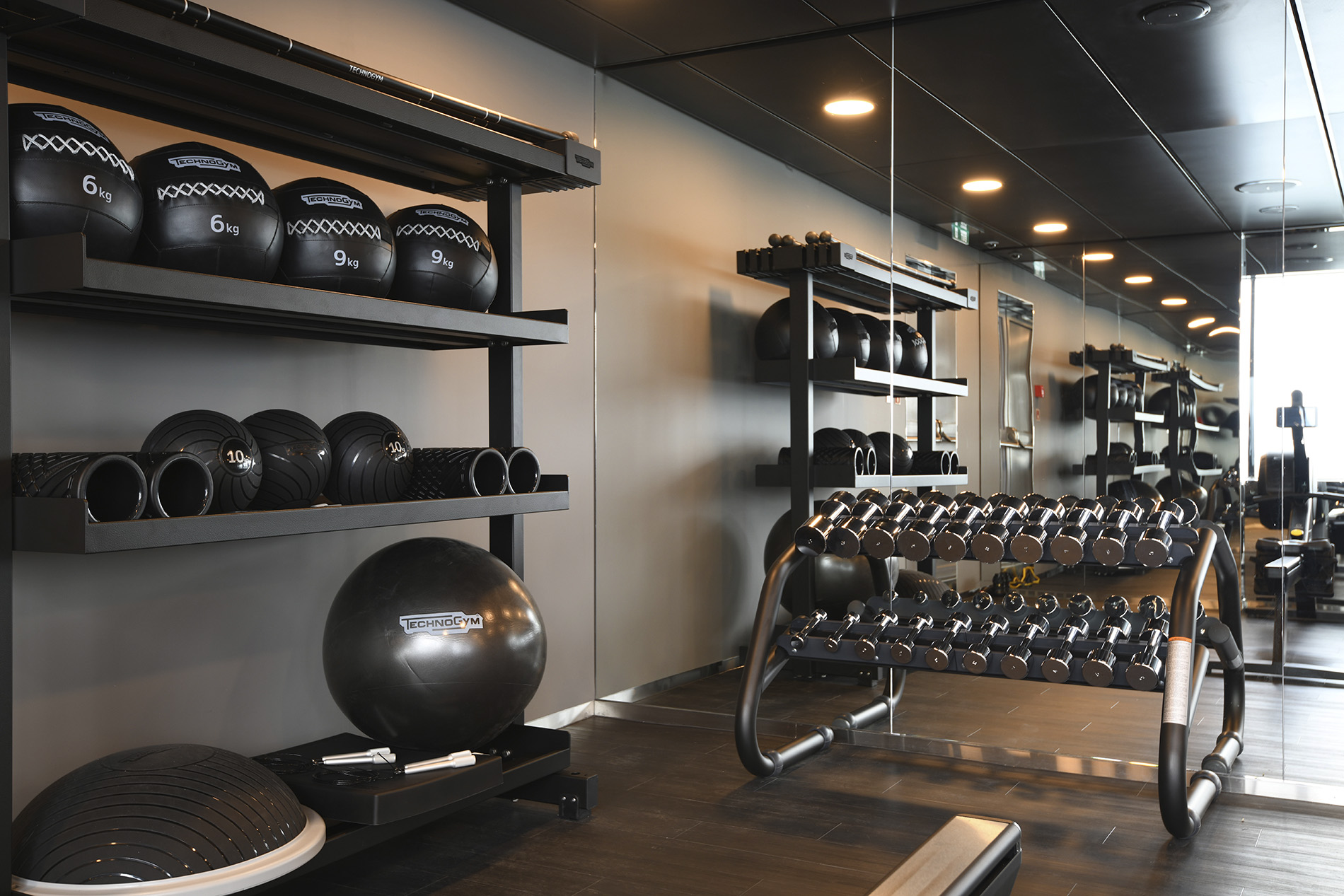
Senses Power Gym.
Keep up your fitness during your voyage in the fully equipped, state-of-the-art gym. Raise your heart rate with a cardio or strength workout as you overlook spectacular ocean views. Train your way or opt for a personal training session with one of our qualified, onboard instructors#.
WI-FI & Internet Access
Complimentary Wi-Fi access is available on board some of our vessels. Please be aware that internet access may be limited or non-existent at certain times due to high demand from other users, or proximity to telecommunication services. We cannot guarantee that you will have full Wi-Fi coverage in your suite.
If you are travelling on a land journey, please note that Wi-Fi is available at selected hotels only.
Smoking Policy
There is a designated outside smoking area on Deck 6 for guests. All suites, including suite verandah’s and terraces are non-smoking.
Special Dietary Requirements
Scenic accommodates special dietary requirements to the best of our ability across our river cruises, ocean voyages and land journeys where applicable. If you have special dietary requests, please notify us at the time of booking and inform your Cruise Director when you arrive.
Please note: while we do our best to accommodate all dietary requirements, special requests are not guaranteed and failure to meet any request is not a breach of contract on our behalf.
If your question has not been fully answered, please get in touch via our Contact Us page.
Dress Code
When you are relaxing on board, the dress code is smart casual and comfortable. Do not forget your swimsuits and exercise attire for the heated pools and plunge pools, the wellness areas and the gym, yoga and Pilates studio.
For evenings, while there are no formal nights, the recommended o board dress code is elegant casual for most restaurants. Suggested attire for women includes a dress, skirt or trousers with a sweater or blouse, and for men, trousers and a collared shirt. A tie and jacket are optional, but not required.
Children
Luxury expedition-style cruising is not recommended for children under 12. Guests under the age of 18 years must be accompanied by an adult and must share their accommodation with an adult. No children’s programs or babysitting services are available on board.
Visitor Policy
In selected ports on request, visitors may be allowed on board. Visitation is not permitted on embarkation and disembarkation day. A visitor form is to be completed prior to the cruise. The guests will be informed once approved. Visitors will receive a visitor pass at ship’s gangway after they provide photo identification. Visitors will need to be accompanied at all times.
Our Commitment to a Sustainable Future
At Scenic, we are committed to ensuring the pristine destinations and communities we visit retain their wonder. We’ve invested in state-of-the-art technology and sustainable initiatives to leave as small a footprint as possible.
- State-of-the-art technology: The GPS Dynamic Positioning system allows the ship to maintain location without dropping anchor onto the sensitive seabed. Our highly efficient engines reduce noise and vibrations for minimal disturbance to the wildlife.
- Biosecurity: We adhere to IAATO and AECO protocols, ensuring that both our crew and guests maintain a safe distance from wildlife and strictly follow biosecurity guidelines.
- Efficient fuel and engines: Advanced emissions technology and IMO low sulphur fuel.
- Wastewater treatment: Advanced treatment systems to ensure minimal impact on local ecosystems.
- Plastics Reduction: We are committed to reducing our environmental footprint, with our ships already over 95% single-use guest plastic-free.
- Local sourcing and on board herb garden: We source from local markets wherever possible, and maintain an on board self-sufficient herb garden, significantly reducing waste and transportation-related emissions.
- Conservation education: Educational program that fosters a deeper understanding of the environments we visit.
Language
The official language spoken on board is English. All officers, staff and crew as well as local guides and regional specialists speak fluent English. All announcements and lectures will be presented in English.

Deck 10
- Smoking Area
- Elevator
- Cabanas
- Sky Cocktail Bar
- Sky Deck & Pool

Deck 9
- Chairmans Club
- Elevator
- Ikon Penthouse
- Scenic Yacht Suite
- Horizon Suite
- Signature Spa Suite
- Deluxe Verandah Suite

Deck 8
- Experience Pool
- Senses Rejuvenation Spa
- Strength & Endurance Gym
- Elevator
- Grand Terrace Suite
- Master One Bedroom Suite
- Grand Deluxe Verandah Suite
- Deluxe Verandah Suite

Deck 7
- Spa Vitality Pool
- Senses Rejuvenation Spa
- Yoga & Pilates
- Elevator
- Balance & Flexibility Gym
- Wheelhouse
- Master One Bedroom Suite
- Grand Deluxe Verandah Suite
- Deluxe Verandah Suite

Deck 6
- Azure Dining Terrace
- Crustory
- Azure Bar & Cafe
- Lumiere Dining
- Alkemia
- Elevator
- Observation Lounge
- Helideck
- Observation Deck
- Deluxe Verandah Suite
- Grand Deluxe Verandah Suite
- Master One Bedroom Suite

Deck 5
- Pool & Pool Terrace
- Yacht Club Bar
- Yacht Club
- Elevator
- Master One Bedroom Suite
- Grand Deluxe Verandah Suite
- Deluxe Verandah Suite

Deck 4
- Summa Dining
- Textura Dining
- Night Market @ Koko’s
- Elements Dining
- Koko’s
- Chef’s Table
- Sushi Bar @ Koko’s
- Elevator
- Guest Service
- Reception
- Main Lounge
- Scenic Bar
- Boutique
- Theatre

Deck 3
- Marina
- Marina Lounge
- Elevator
- Discovery Centre

